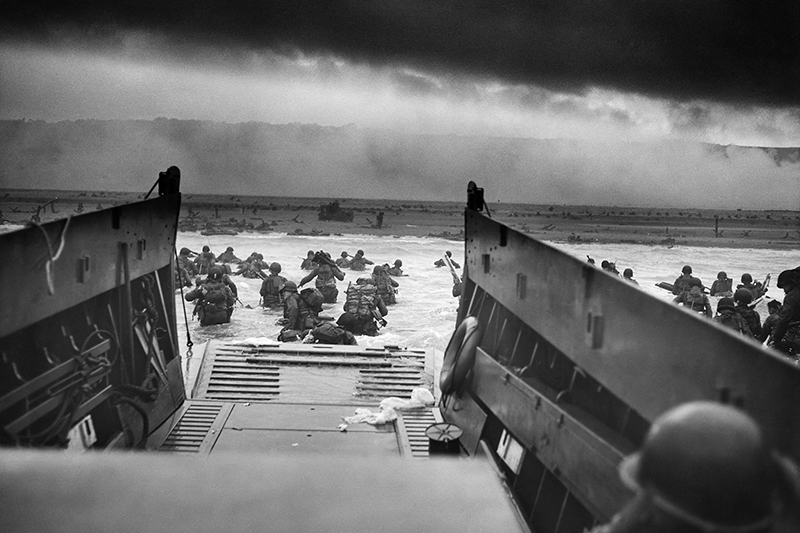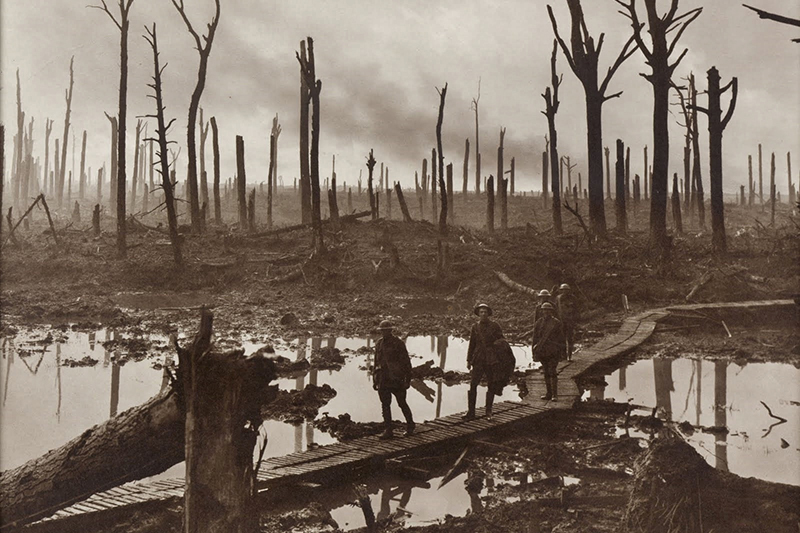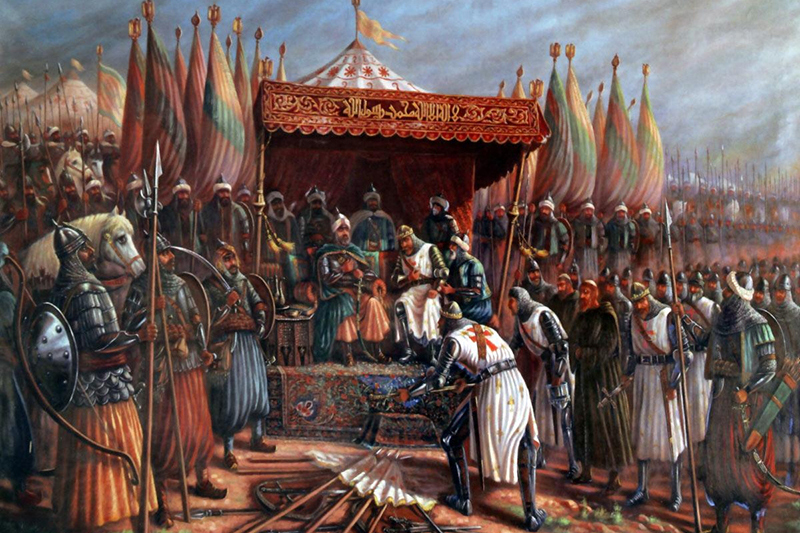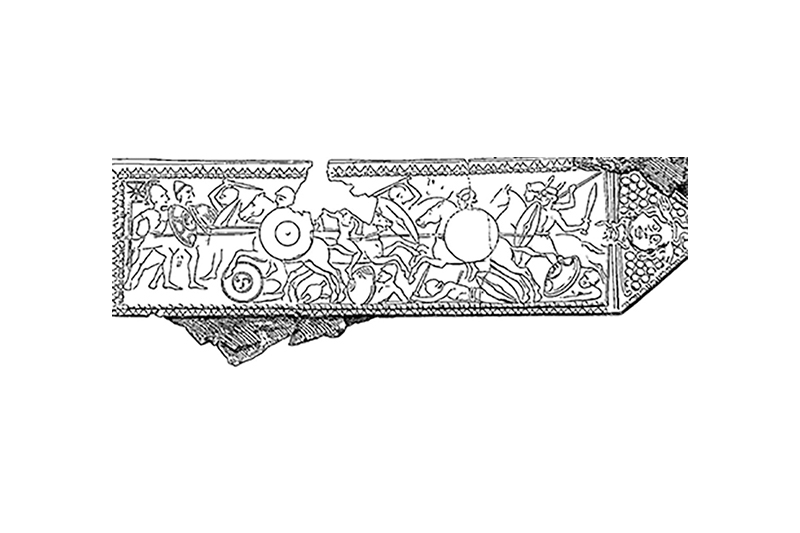Weather and War
UNO Magazine turned to four professors in the UNO Department of History, asking them to cite the wars or battles they find most memorable for how they were impacted by weather.
This story was first published in the Summer 2017 issue of the UNO Magazine
The first rule on the first page of the Rules of War, it has been said, is "Don't March on Moscow."
The genius that was Napoleon, then, made perhaps the biggest boneheaded move of his life when he took his army to that venerable Russian city in 1812.
First, Napoleon’s men were beset by extreme heat. Then winter set in—one of the coldest on record. Even Muscovites had to bundle up. The winter turned cold, warm, then unbelievably cold. Thousands in Napoleon’s Army died in their sleep, frozen to death.
Weather turned the tide of the war, turned Napoleon back to Paris, and marked the beginning of the end of the "Little Corporal’s" reign in France.
It wasn't the first time—nor will it be the last—that weather determined the outcome of a war or battle.
UNO Magazine turned to four professors in the UNO history department, asking them to cite the wars or battles they find most memorable for how they were impacted by weather.
June 6, 1944 | D-Day
By Leslie Coffman
Specialization: U.S. history, ethnic and racial history in the United States
As the Allied amphibious assault against multi-layered German defenses drew closer, Allied planners grew more and more nervous. Dwight D. Eisenhower’s own chief of staff predicted only a 50-50 chance of success. In the United States, word that the long-anticipated invasion had begun captured the attention of the nation. Despite all the intense planning, the D-Day invasion almost failed, partially due to thick clouds (along with German anti-aircraft fire) that caused many of the paratroopers to miss their landing zones. Low clouds also resulted in the Allied planes dropping their bombs too far inland, and the naval bombardment was equally ineffective. The Allies prevailed, but only at great cost—more than 209,000 casualties, including the deaths of 37,000 ground troops and 16,714 air force personnel.
July 1917 | Battle of Ypres
By Charles Klinetobe
Specialization: U.S. history, sports history, racial history
In July 1917, the British began an effort to push the Germans from a ridge at Passchendaele, Belgium. Passchendaele would open a path to the submarine base in Bruges. Years of fighting on the Ypres Salient reduced the area to a moonscape. Heavy rains in August turned the bare field to deep mud that made movement impossible. The rain combined with residue from chlorine gas attacks to create pools of hydrochloric acid in shell craters and trenches—all of it flowing downhill toward the British. Passchendaele was captured in November, but the push to Bruges had to be abandoned due to heavy casualties. Historians estimate that 35 men fell for every square meter at Passchendaele. From July to November there were an estimated 400,000 to 800,000 casualties.
July 4, 1187 | Battle of Hattin
By Martina Saltamacchia
Specialization: Medieval history, cathedrals, Crusades and trade
On July 4, 1187, at the Horns of Hattin, west of the Sea of Galilee, the army of the Crusader Kingdom of Jerusalem met the troops of the Muslim sultan Saladin. It was an excruciatingly hot summer. The Muslims, using weather to their advantage, blocked the Crusaders’ access to cisterns, emptied water pots in front of them, and lit smoky fires with dry grass and stubble. The Crusaders, weakened by the heat and anguished by thirst, soon were surrounded by the Muslims. After destroying the Crusader army, Saladin went on to conquer a defenseless Jerusalem.
190 BCE | Battle of Magnesia
By Jeanne Reames
Specialization: Greek and Ancient Near Eastern history, Alexander the Great
The battle that handed Rome control of Asia involved Roman legions vs. Seleucid pike phalanges, heavy cavalry, light troops and even two different types of elephants. It also involved rain. The Seleucids had longer spears, bigger elephants and a larger army overall and should have defeated the Romans. But they didn't. One reason was the superior training by Roman NCOs, who rallied their troops under attack. The unpredictability of elephants also hampered the Seleucids. But an overlooked reason involved a light rain/mist. Key to Asian armies were archers, but rain loosened the Asian bows, preventing them from providing adequate missile cover. Had the bows functioned, the Roman legions may have had a harder time regrouping—and the Seleucids might have prevailed.
This article appeared in the UNO Magazine - the flagship publication of the University of Nebraska at Omaha, for alumni, faculty, staff, students, donors and friends of UNO.
The most current issue is located online.
Alumni: Update your information here



